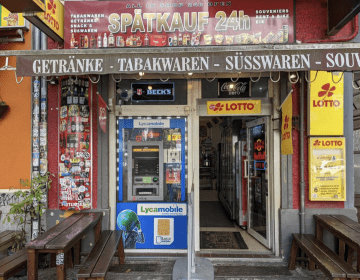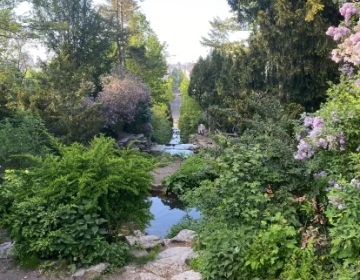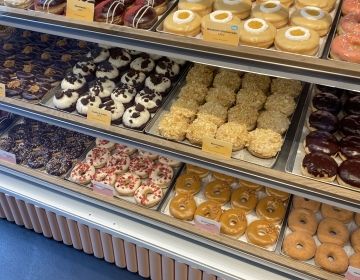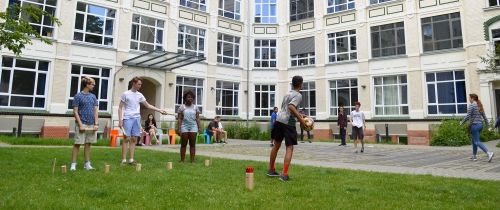
Diversity in Berlin
CIEE wants all our students to feel welcomed, supported, and empowered to succeed while studying abroad. On this page, local CIEE staff have provided details about conditions and cultural attitudes that students with specific identities might encounter at their location.
The information below is just a broad overview so if you have specific questions or concerns not covered here, please email inclusion@ciee.org. We would be glad to have local staff share their perspectives, talk with you about accommodations, connect you with resources, and/or put you in touch with a program alum who could speak about their experiences navigating a program in this location.
No matter where you choose to study abroad with CIEE, our staff—all of whom receive regular and comprehensive training in diversity, equity, and inclusion—will be on hand throughout your program to provide advice, resources, and support regarding these issues.
Body Size/Image
Body size and body image are not commented on in public and there is a diversity in body sizes within the German population comparable to the United States, though in the city of Berlin, people fall under the category of straight size. Like in the United States, individuals with larger body sizes may face microaggressions and additional attention. Germany’s understanding for body size and body image as a social category that influences an individual’s experience of the world is still nascent and representation for large-bodied people is only recently (slowly) becoming a part of the mainstream media landscape. For example, few mainstream fashion retailers in Germany are size inclusive and don’t cater to the reality of a wider range of body sizes while certain online retailers have. Advertising in Germany has started to address the lack of representation in their campaigns by using models that challenge conventions of beauty, but this is quite recent.
Disability
The German Act on Equal Opportunities for People with Disabilities was instituted in 2016. Government policy is improving, and social attitudes towards persons of varying ability are likewise reflected. People with disabilities do fully participate in day-to-day life, attending school, university, work, and the community.
Berlin, as a city-state, is increasingly more accessible. Newer infrastructure for public and long-distance transportation is equipped with barrier-free access. Newly renovated streets, sidewalks, new and renovated buildings, and public spaces are fully accessible for persons of all abilities. Old infrastructure presents a challenge in Berlin. Many side streets are cobblestone and sidewalks are not consistently sloped for easy road access. Many buildings remain accessible only by steps, without elevators or automatic doors. Wheelchair access to older underground train stations is mixed and dependent on renovation.
Students are encouraged to provide as much information as they can related to their specific disabilities (or related needs) prior to arrival so CIEE staff can assess potential challenges and arrange for appropriate accommodations.
Socioeconomic Status
Berlin is a relatively affordable city. Food is reasonably priced; there are affordable grocery stores within easy walking distance of G27, and you can get a falafel around the corner for 4 euros. Be prepared that a monthly public transportation pass costs 91 euros. The city has many bike rental options that allow students to navigate the city at a low cost, for example, Swapfiets a subscription bike service allows students to rent a bike on a month-to-month basis for a fee of 19 euros a month. Many cultural events are free (check out Eventbrite.de or gratis-in-berlin.de). Flea markets, located all over the city, are a weekend staple and a great place to find affordable goods. Berlin is not a city that emphasizes status symbols of wealth or extravagance and Kreuzberg in particular has a proud alternative tradition.
Gender and Gender Identity
In Berlin, you can expect to find reasonably high levels of gender equality in everyday life. Catcalling and aggressive flirting are less prevalent than in the US, and it is the norm for men to do their fair share of domestic chores, whether in a shared student apartment or in the context of a family. Berlin is a city that celebrates gender expression and gender identity as a social construct. Kreuzberg-Friedrichshain in particular are welcoming environments for all gender identities. For example, gender neutral bathrooms and stating pronouns is common. Although Berlin is a progressive city, more rural regions of Germany can be rather traditional when it comes to gendered language, gender roles, and gender expression.
X Gender Marker
There is a large and active queer community living in the city of Berlin. In 2018, Germany created a third option as a sex marker in civil status entries allowing the choice of “male”, “female”, and “diverse”. Germany is now one of the few countries worldwide to recognize by law more than two genders. Many public spaces such as restaurants, cafes and bars have gender inclusive bathrooms, but it is still not the norm in Germany to have gender neutral bathrooms. There are many community organizations and resources for people to lean on for support within the queer community. Schwulenberatung Berlin is a great resource for those looking for more information about LGBTQI+ specific health centers, therapists, social services, legal aid, and community and advocacy groups. Overall, the city of Berlin is an inclusive city that openly celebrates the LGBTQI+ community.
Heritage Seekers
If you are of German and/or Jewish heritage, you will have plenty of opportunities to engage with local history and culture. Whether you are interested in pursuing genealogical research, visiting historical sites, exploring religious and/or regional cultures, or learning more about the history of emigration from Germany and Europe to the US, there are several resources and organizations available in Berlin and throughout Germany. The Student Life Office can help you pursue your interests and connect with specific communities.
Racial and Ethnic Identity
In Berlin, you may be surprised by the lack of visible diversity compared to major US cities. Approximately 20% of the city’s population does not hold a German passport, with the majority of immigrants coming from Eastern Europe and Turkey. A significant number of Syrian and Ukrainian refugees have settled in Berlin in the last few years. The neighborhood of the CIEE Berlin Center has a particularly high proportion of inhabitants born outside Germany. You will hear a wide variety of languages spoken on the subway, and many people will understand English. Berlin has a large Southeast Asian population, particularly in former East Berlin. During orientation and throughout your program, CIEE staff are on hand to provide advice and support regarding issues of racial and ethnic identity.
Religion
In Germany as a whole, the predominant faith community is the Christian faith, with Protestants primarily in central and northern Germany and Catholics primarily in western and southern Germany. The majority of Berliners are not officially registered as members of an organized religion. For those Berliners who do practice a faith, the four largest faith communities in order of size are Protestant Christianity, Catholic Christianity, Islam, and Judaism. In smaller constellations, people can find active communities of Orthodox, Free Church and other Christian groups, Buddhist, Hindu, and Bahá'í, and Sikh communities. Larger ecumenical bodies suggest that there are currently more than 250 religious and ideological communities active in Berlin. The Berlin Student Life team can provide you with suggestions and resources to connect you with your specific community.
Sexual Orientation
Berlin is particularly welcoming to LGBTQ+ students. CIEE's Berlin study center is located in the neighborhood of Kreuzberg, which is also home to many queer spaces. One of your best resources will be the Siegessäule magazine (www.siegessaeule.de, partly in English), which has information regarding events, locations, etc. L.mag (http://www.l-mag.de, be prepared to use Google Translate) may be of interest to students who identify as lesbians. The CIEE Student Life and Academic staff is also well-equipped to help answer any other questions and provide additional resources on-site.
Programs in Berlin
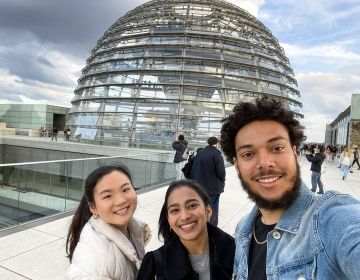
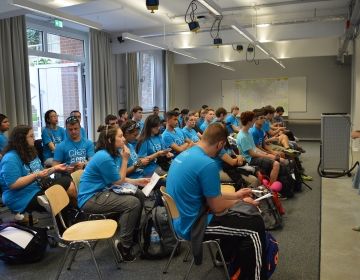
Live from Berlin
Live among the locals and see for yourself why Berlin is ranked among the top for global urban quality-of-life – with excellent public transportation, you’ll have no problem exploring the city’s parks, orchestras, museums, festivals, and historical landmarks. Learn more about programs in Berlin
The Späti-Chill: A Socio-Cultural Icon in Berlin
By: Grace Meisner A club with no cover for entry, a bar without the wait for a bartender, a supermarket, meeting place, internet cafe, drugstore, post office, and gift shop... keep reading
Finding Peace in Berlin: Hidden Sanctuaries
By: Rachel Fischler Berlin is so beautiful for its calm, including millions of different people from all walks of life, forming a beautiful weave of color and creativity. In this... keep reading
Top 3 Vegan Spots in Berlin
By: Rachel Fischler Berlin is a haven for vegans and vegetarians alike. Incredibly progressive and diverse in lifestyles, culture, and background–Berlin is a culinary whirlwind with tastes for every palette... keep reading
